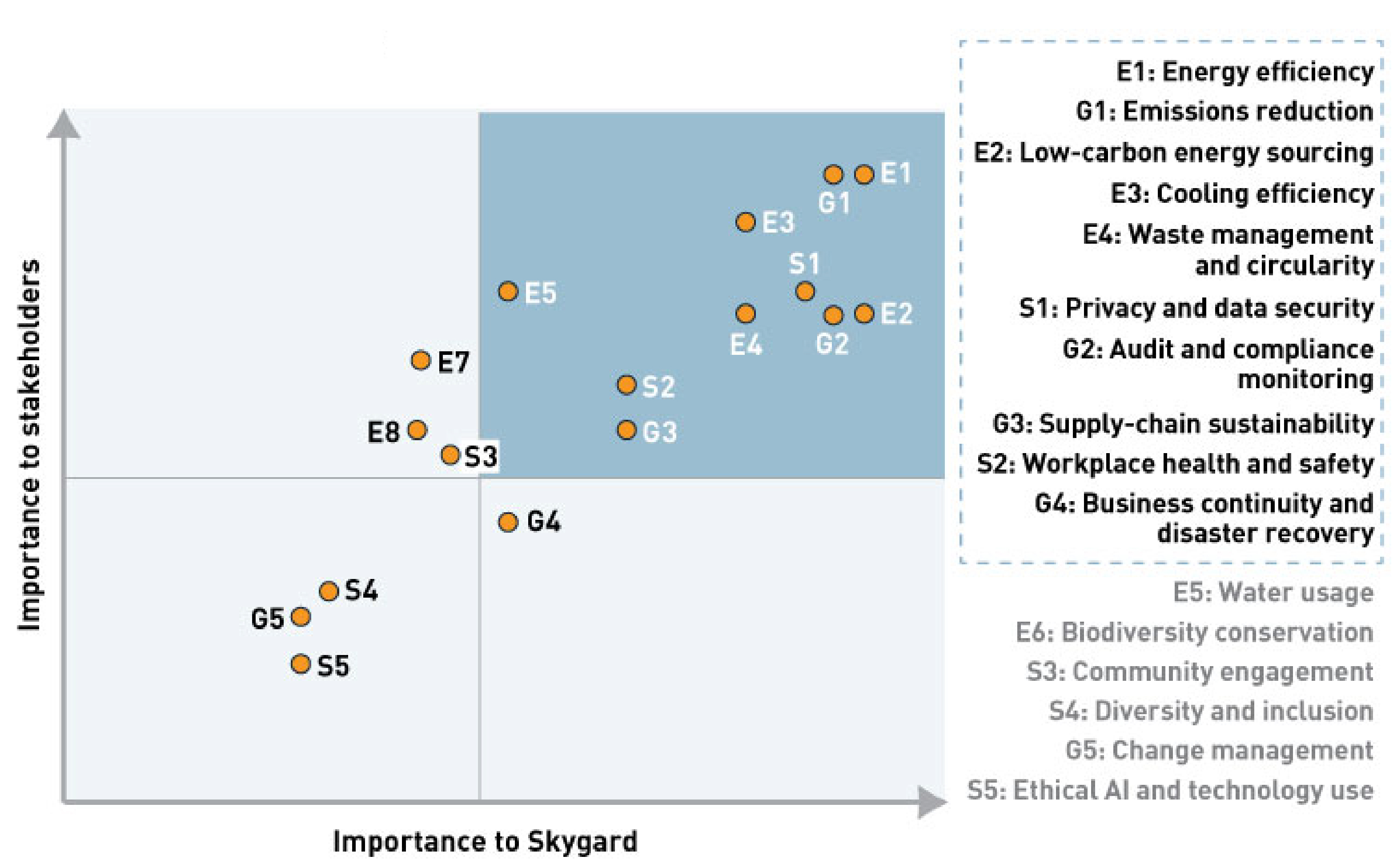Improving data-centre sustainability with a ‘born-green’ approach
Client project | Strategy
“Analysys Mason has helped us to define precisely what a state-of-the-art sustainable data centre looks like.” Skygard
Skygard’s board of directors commissioned Analysys Mason to develop its sustainability strategy for a new breed of data centres. Every decision – from site selection to building materials used and, ultimately, the overall operation of the three centres – was taken with sustainability in mind.
As these data centres are designed to minimise its environmental footprint, Skygard is responding to the growing demand for data centres that are sustainable and climate-neutral. Emissions-based certification is an increasingly important procurement criterion, in addition to the existing requirements for the highest security standards and value for money.
Most data-centre operators and investors are exploring ways to improve the energy profiles of existing data centres. Skygard represents a different approach: telecoms operator Telenor, energy company Hafslund and private-equity firm HitecVision came together as an investor consortium to build three ‘born-green’ data centres, forming Skygard to own and operate the facilities.
The unconventional decision was made to locate the three data centres within a busy capital city, with the aim of reducing energy loss and transmission infrastructure, but more significantly to harness heat waste for Oslo’s existing district heating system.
Prioritising sustainability
We ranked the many possible sustainability considerations and determined priorities, weighing the trade-offs between commercial and sustainability objectives. This materiality analysis – informed by a detailed study of relevant frameworks, international competitors, customer requirements and the latest technologies – balanced factors from the perspective of both the company and its stakeholders. Ultimately, ten priorities were identified to inform Skygard’s construction and operations.
Figure 1: Materiality analysis identifying Skygard and its stakeholders ten priority areas for sustainability initiatives1
Source: Analysys Mason
Skygard has introduced a novel feature that prioritises sustainability – priority 'E3: Cooling efficiency' – which focuses on optimising the cooling efficiency of its facilities, which Skygard and its stakeholders identified as a high priority. This feature utilises liquid cooling, rather than more conventional air-cooling, which will harness Norway’s natural cold-water streams. This will result in better energy efficiency, reduced load on the electricity grid and fewer refrigerant pollutants.
Building the most energy-efficient data centres in Norway
Starting from scratch, we developed the blueprint for the design, construction and management of a more sustainable data centre.
Skygard’s three ‘born-green’ data centres are planned to be the most energy-efficient in Norway and will deliver 40MW in capacity. In addition to a low-carbon construction process, Skygard data centres will have an energy requirement that is less than half that of a traditional data centre. This comes from best-in-class power utilisation effectiveness (PUE) of ≤1.1, as well as low construction waste (25kg/m2), along with an 100% fossil fuel-free construction site (within the construction perimeter). For data-centre providers wrestling with the question of what a sustainable facility looks like, SkyGard’s model gives a glimpse of the future.
1 E = economic, S = social, G = governance. The numbers in the figure depict the priority ranking for each feature from a scale of 1–7 within the ESG categories where 1 is the most important and 7 is the least important.


